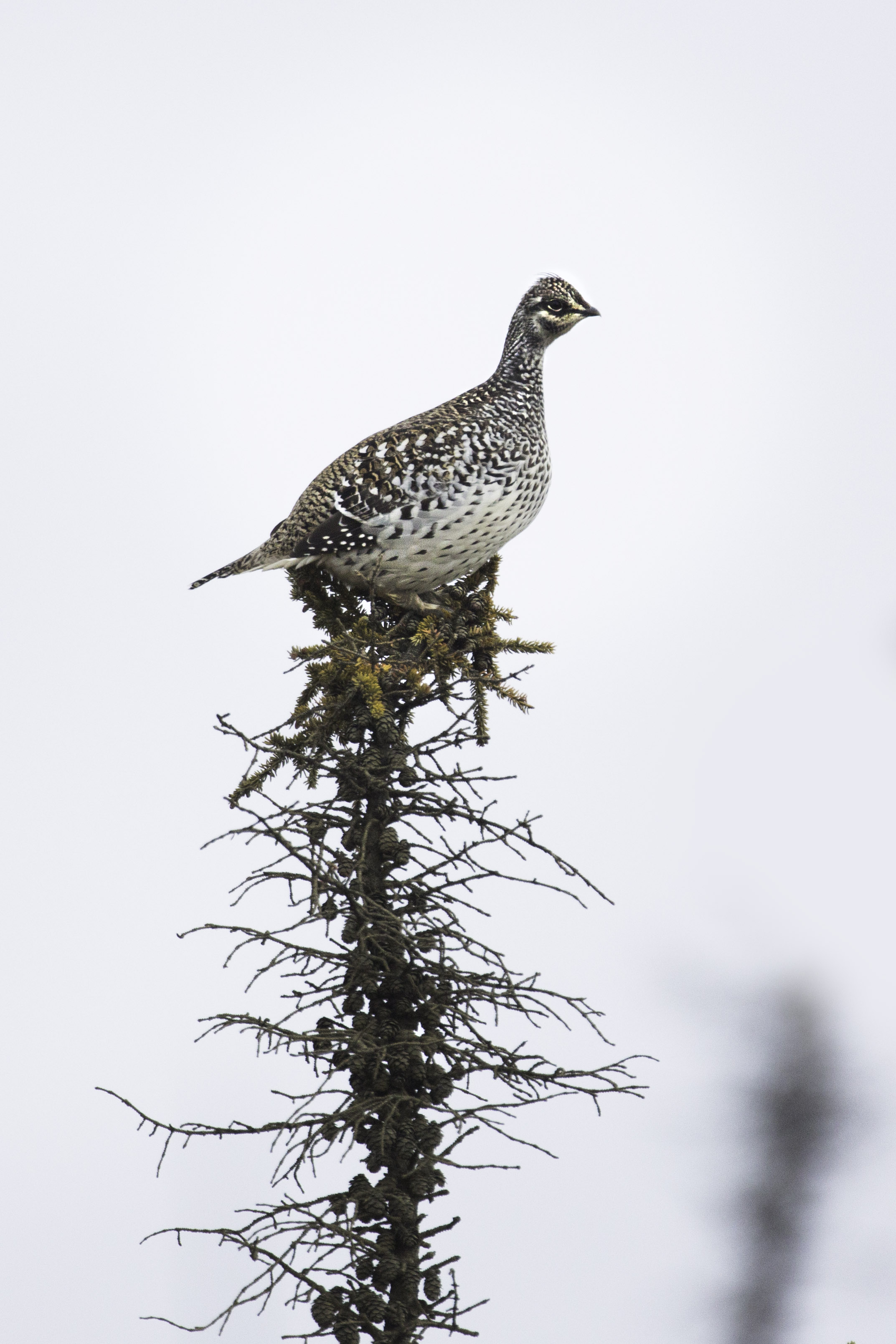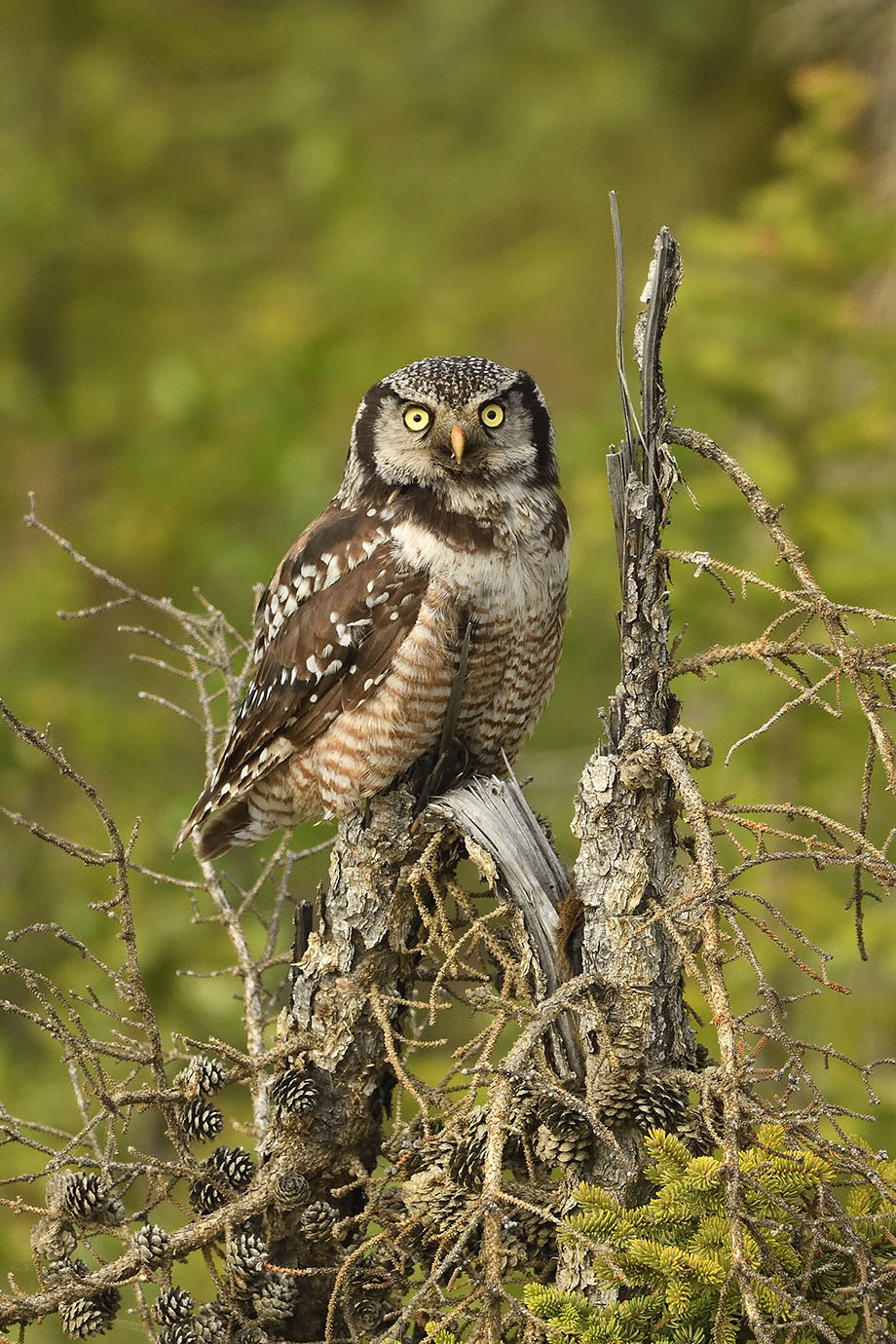Dalton June
Trip One Dates: June 12 - 18, 2025
Trip Two Dates: June 19 - 24, 2025
Photo Tour Fees:
$4500 / person. Fee includes in-field guiding, instruction, transportation and gas. It includes lodging for three nights in Wiseman only. It does not include lodging in Fairbanks or Deadhorse or meals. $1500 will be required to reserve the spot on the trip, then the balance of $3000 will be due ninety days in advace.
Trip One from: Fly in to Fairbanks, Alaska. Fly out from Deadhorse, AK
Trip Two: Fly in to Deadhorse, fly out of Fairbanks.
Leader: Matthew Studebaker
Target Group Size: 4-5 participants
Driving the Dalton highway through the center of the Alaskan wilderness is one of America’s great motoring adventures. The scenery is magnificent, from the boreal forest lining the Yukon River, to the spectacular peaks of the Brooks Range, to the broad sweep of tundra blanketing the coastal plain. In June, when grasses and lichen poke through the last remains of half-melted snow, concentrations of a wonderful variety of arctic breeding birds crowd the tundra and forests along the road. This is a unique trip which will give us access to a stunning array of habitat and also give the participant a unique and broad perspective of Alaska.
Our trip will begin in Fairbanks, Alaska. (trip two is the inverse, beginning in Deadhorse). From here we will start exploring the northern boreal forest in search of many beautiful songbirds such as the Blackpoll Warbler as well as Northern Hawk Owls and mountain scenery. Next we will head north crossing the arctic circle to the edge of the treeline where we stay in a beautiful bed and breakfast located at the edge of the Brooks Range Mountains. Proceeding further north, our group will cross the Brooks Range with Arctic National Wildlife Refuge on the right side of the road, Gates of the Arctic National Park on the left. In the mountain pass itself we should be able to find Northern Wheatear, American Pipet, Long-tailed Jaeger, Smith's Longspurs, and more. The Brooks Range mountains themselves have a stunning and stark beauty. As the taper off, we enter the North Slope, where endless tundra provides habitat for Red-throated and Pacific Loons, Wagtails, Arctic Warbler, Lapland Longspurs, and a variety of shorebirds on breeding territory, Caribou Herds, and Musk Ox. With lots of luck, we may even have chances at more rare birds such as Spectacled Eider or Yellow-billed Loon.
Trip One Schedule:
June 12 - late afternoon dinner and introductions in Fairbanks, then evening photography near boreal lakes. Red-necked or Horned Grebe, Rusty Blackbird, more. Boreal Owl?
June 13 - Fairbanks AM. Townsend's Warbler or Three-toed Woodpecker. Break, then depart down the Dalton Highway
June 14 - Staying at a B and B / cabins in the mountains, explore the southern Brooks range. Northern Hawk Owl, Pine Grosbeak, Redpolls, waterfowl, Moose.
June 15 - Brooks Range Exploration. Long-tailed Jaeger, Northern Wheatear, Lesser Yellowlegs, Smith's Longspur, Golden Eagle, Hawk Owl
June 16 - Drive 235 miles North to Prudhoe Bay. Arctic Warbler, Yellow Wagtail, Long-tailed Duck, Musk Ox, Caribou. Yellow-billed Loon?
June 17 - day 5 - Explore Prudhoe Bay area. Stilt Sandpiper, Pacific Loon, King and Spectacled Eider, Snow Bunting, Ptarmigan, Phalaropes
June 18 - if weather allows, photograph through the never-setting sun at night potentially getting to bed in the early morning hours. Fly out of Deadhorse at a time of your choosing.
Trip Two Schedule:
June 19 - late afternoon dinner and introductions in Deadhorse, then photograph through the never-setting sun at night potentially getting to bed in the early morning hours.
June 20 - Spend the day photographing in the high arctic. Stilt Sandpiper, Pacific Loon, King or Spec Eiders, more.
June 21 - Drive to the Brooks Range Mountains. Musk Ox, Caribou, Smith’s Longspur, Northern Wheatear, Yellow-billed Loon, Arctic Warbler.
June 22 - Explore the Brooks Range. Northern Hawk Owl, Golden Eagle, Longspurs, Yellow-billed Loon if possible
June 23 - One more day in the Brooks Range picking up anything we missed. Pine Grosbeaks, Northern Hawk Owl.
June 24 - Drive to Fairbanks. Moose, Horned and Red-necked Grebes, Blackpoll or Wilson’s Warblers, Redpolls, Boreal Chickadee, Boreal Owl if possible.
June 25 - Fly out of Fairbanks at a time of your choice. Most of us will take the redeye, and after some rest could give some Fairbanks species one more go. Townsend’s Warbler, Canada Jay, Three-toed Woodpecker.
Equipment: I recommend bringing either a DSLR or high-end mirrorless system. Bring your longest lens. Anything less than 600mm equivalent will really not be enough for many or most of the birds. Most photographers will prefer a 500mm or 600mm with a 1.4x extender or crop sensor body, or an 800mm. We will be passing through some truly spectacular scenery. Although the focus of the trip is birds, we will almost certainly make a few brief stops for mountain vistas. For landscape lenses on this trip, a wide angle and a short telephoto are perfect. I personally bring my 18-55mm and my 70-200mm.
Birds:
Species in bold are the easier species to find and photograph. We will probably get 70% of the bold species. Species in italics are species we will go out of our way to find, even if chances aren't high. Species which are not bold or italicized are either difficult to find, difficult to photograph, or simply not high priority. I expect to only get decent shots of about 30% of these.
Willow Ptarmigan
Rock Ptarmigan
Northern Hawk Owl
Golden Eagle
Tundra Swan
American Wigeon
Northern Shoveler
Northern Pintail
Green-winged Teal
Bufflehead
Lesser Scaup
Greater Scaup
Long-tailed Duck
Spectacled Eider
King Eider
Red-throated Loon
Yellow-billed Loon
Pacific Loon
Common Loon
Red-necked Grebe
Horned Grebe
American Golden-Plover
Pacific Golden-Plover
Wandering Tattler
Semipalmated Plover
Whimbrel
Bar-tailed Godwit
Wilson's Snipe
Lesser Yellowlegs
Stilt Sandpiper
Pectoral Sandpiper
Semipalmated Sandpiper
Long-billed Dowitcher
Western Sandpiper
Red-necked Phalarope
Bonaparte’s Gull
Glaucous Gull
Arctic Tern
Parasitic Jaeger
Long-tailed Jaeger
Pomerine Jaeger
Common Raven
Cliff Swallow
Canada Jay
Boreal Chickadee
Alder Flycather
Arctic Warbler
Bluethroat
Northern Wheatear
Gray-cheeked Thrush
Swainson's Thrush
Eastern Yellow Wagtail
American Pipit
Orange-crowned Warbler
Yellow Warbler
Northern Waterthrush
Wilson's Warbler
Townsend’s Warbler
Blackpoll Warbler
Yellow-rumped Warbler
American Tree Sparrow
Savannah Sparrow
Fox Sparrow
White-crowned Sparrow
Golden-crowned Sparrow
Lapland Longspur
Smith's Longspur
Snow Bunting
Rusty Blackbird
Hoary Redpoll
Common Redpoll
Pine Grosbeak
Mammals:
Grizzly Bear
Caribou
Moose
Musk Ox
Red Fox
Arctic Fox
Dall Sheep
Below are some beautiful images by my participants from previous trips:
What to pack
Boots: Warm winter boots and comfortable warm socks.
Waders: In order to successfully photograph loons, grebes, and waterfowl in ponds, as well as sit on wet tundra, each participant needs to be completely waterproofed up past their belt, and be able to walk in water up to 18" deep. Fishing waders are usually the best solution.
Jacket: You will want a coat. Be prepared for temperatures in the lower 30's to the mid 60's.
Hat and Gloves: I recommend bringing a ski mask to keep your face warm in case it is especially windy on the tundra. A warm hood could be nice as well. Wear the warmest gloves possible but make sure you can still operate your camera gear with your gloves on. Hat and gloves won't be needed most of the time, but I like everyone to have them.
Binoculars: Not essential, but binoculars are convenient to help spot birds, as well as view distant point of interest.
Cell Phones and Internet: We will have fast wifi in Fairbanks, but no internet in the Brooks Range aparst from 5 minutes worth of texting at breakfast or dinner. It's likely we may have brief wifi and reception on the arctic coast on the last day as well, but nothing in the arctic is totally reliable.
Weather and Schedule:
North of the Arctic Circle, the sun will never set. The best light for photography will tend to last between 6am to 10am, and again 6:30pm to 10:30pm. On cloudy days the best light will last between 8am and 8pm.
Transportation: There will be a lot of driving during this trip in order to gain access to a variety of habitats. I will rent a full-sized van for the group. Most of the photography will be done right near the road, but in the northern tundra we will have to get in waders and walk several hundred yards in boggy tundra or shallow puddles.
Hotel: More information to be provided about where to stay upon signing up for the trip.
Roughing it, a tiny bit: As with anywhere in Alaska, some days we'll need bug spray. The road can be bumpy or dusty at times. On the forth day, there will be no restroom facilities for over 10 hours. We will also eat all lunches on the road.
Learning / Slideshows:
On the first day, and during a couple mid-day breaks I will go over some tips, composition, and post processing ideas. Along with a few brief slideshows and discussions, I will try to talk about my photographic vision for each situation and spout off my camera settings in the field as well as peek over everyone's shoulder from time to time to check histograms and exposures. Aside from that, I'll need YOU to tell me if you have additional questions, learning objectives, or concerns. I'm happy to help as much as you wish and the group is small so I can give each of you as much attention or as little as you want when it comes to using the camera gear.
My job is to know the area, do many hours of research, know and be able to ID the animals instantly and understand their habitat and behaviors, drive you to the most productive areas at the right time of day, be prepared to attract the animals or assist the group in stalking them, advise on how to make the most of each photo opp, ensure that everyone has their physical needs met, and ensure that everyone gets the most and highest quality images in the time we have.
Your job is to communicate your needs and have fun. I want to emphasize that each of you please communicate and keep me aware of your needs.
Physical Requirements:
Almost all the photography on this trip will be done within a five minute walk of the road, much of it right from the road margins. Participants must be willing and able to walk through spongy, grassy tundra, sit in the car for periods of 10 + hours on two days (but with breaks usually every hour or more).
Cancellation Policy: Participant will receive a full refund of their deposit minus a $250 re-listing fee if we are able to fill the cancelled space. If we are unable to fill the cancelled space, the deposit will be forfeit.








































































































































